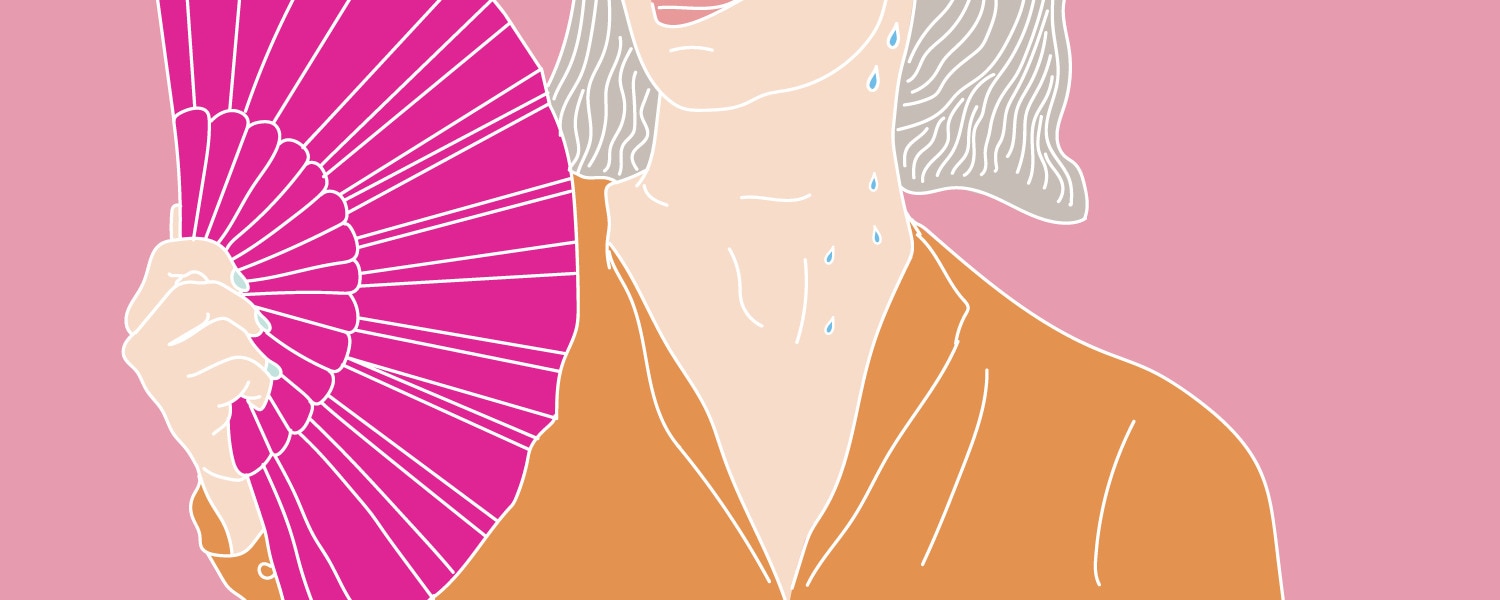Understanding hot flushes in menopause

If you’ve ever felt intense heat surge through your body and cause your cheeks to burn, then you may have already experienced a hot flush. Let’s discover more about what a hot flush is during menopause and what you can do to help it.
Just as puberty and PMS bring about many changes to our bodies like hair growth and mood swings, so does menopause. It may be strange to feel like our body is acting in a way that we’re not used to and that we can’t control, but menopause is a natural process that marks the beginning of a new chapter in our lives.
As our bodies gently start to slow down their hormone production during menopause, it’s likely that we’ll experience some symptoms. One of the most common is something called hot flushes (or hot flashes). And while some of us may never go through them, others may experience several hot flushes per day – everyone reacts differently during perimenopause and it’s normal to experience them after menopause too. [1] Let’s take a look a closer look!What does a hot flush feel like?
Ever been complimented or even called out on something and felt your cheeks flare up with heat or your whole face turn red? Well, a hot flush isn’t too different from this! Many people describe it as a sudden heat wave that spreads upwards through the body, chest, neck and face, often making your skin redden too.[2]
Hot flushes tend to last for a few minutes, until your body eventually returns to its normal temperature.
What is the cause of a hot flush?
Hot flushes usually pop up around the menopause, so it is thought that they are caused by the hormonal changes that occur during this period (the levels of the hormones oestrogen and progesterone in your body decrease). As a result, it is normal for your body temperature to fluctuate and sometimes produce a reaction in the form of a hot flush.
Hot flushes can occur at any time of the day or night, without you being able to do much to control them – as with most hormonal reactions! But there are some external triggers such as spicy food, caffeine, smoking, alcohol, thick clothing and certain types of medication. Though this doesn’t mean that you need to completely cut your favourite curry out or give away your beloved chunky knit just yet – there are many tips and tricks that can help you manage your hot flushes.
Are there any tips for reducing hot flushes?
While hot flushes may not be ideal, they are not a sign of anything wrong. In fact, they’re just your body telling you that it is going through the natural transition of menopause. They also won’t last forever! But if you are finding that your hot flushes are becoming too troublesome, then you may want to try these tips to help ease them:
- Wear clothes that are made out of breathable fabrics and dress in layers – this way, if you start feeling hot, you can speedily remove an item of clothing.
- Stay cool at night – use cotton sheets on your bed as opposed to synthetic ones.
- Use a cold compress, fan or cooling spray to help alleviate the heat.
- If you know that you’re susceptible to certain triggers such as alcohol or coffee – try to avoid them. If you still crave the taste of coffee in the mornings, you could also switch to decaf!
- Talk to your doctor about potential medical treatments such as hormone replacement therapy (HRT).
Even though no one is probably a fan of hot flushes, they are an incredibly common symptom during menopause – just talk to your friends, mother or aunts! If your hot flushes are making you feel self-conscious, anxious or stressed out, you can also try breathing exercises, visualizations, or even meditation; after all, managing your feelings can help better cope with them.
And no matter which trick best helps you deal with hot flushes, it's also good to remind yourself that they are not permanent, but just a sign that your body is getting ready for a wonderful new phase. To continue reading about menopausal changes, check out our article on how will your body change postmenopause.
Medical disclaimer
The medical information in this article is provided as an information resource only, and is not to be used or relied on for any diagnostic or treatment purposes. Please consult your doctor for guidance about a specific medical condition.
[References]


